Our next major stop after Winnipeg was the International Peace Garden on the Canadian U.S. border.
Ever since the slogan first appeared in 1956, I have been fascinated by the nickname, "PEACE GARDEN STATE" on North Dakota license plates. Recently demoted in size and now relegated to a tiny corner of the plate in favor of a buffalo, it's still there. What is a Peace Garden? I would finally learn.
It's less than two hundred miles from Winnipeg to the International Peace Garden on the U.S.-Canadian border, but it took us just about 24 hours to make the trip. We found several things we wanted to stop and see along the way and didn't exactly follow a straight line.
Fifty miles west of Winnipeg along the Assiniboine River lies the town of Portage la Prairie, population about 13,000. Fur traders and others heading for Lake Manitoba, about twenty miles north of the town, would have to take out their boats and portage across the prairie here - hence the name. Just outside of town, we came upon the Fort la Reine Museum, a replica of the original fort built here in 1738 to support exploration and the fur trade.

The five-acre Fort la Reine Museum and Pioneer Village contains an eclectic gathering of historic collections ranging from a military museum to the largest collection of Case farm equipment along with several prairie homes spanning about two centuries.
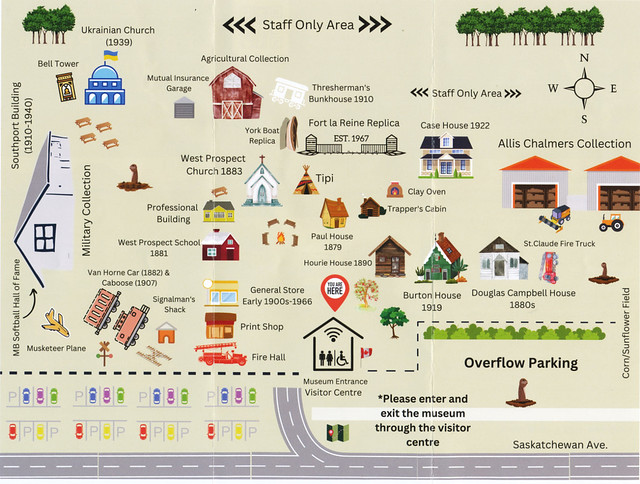
The well-furnished Paul House, dating from 1879, is likely typical of many 19th century homestead houses throughout Minnesota as well as Manitoba. Home to a family of twelve it provided cozy comfort during the harsh prairie winters.
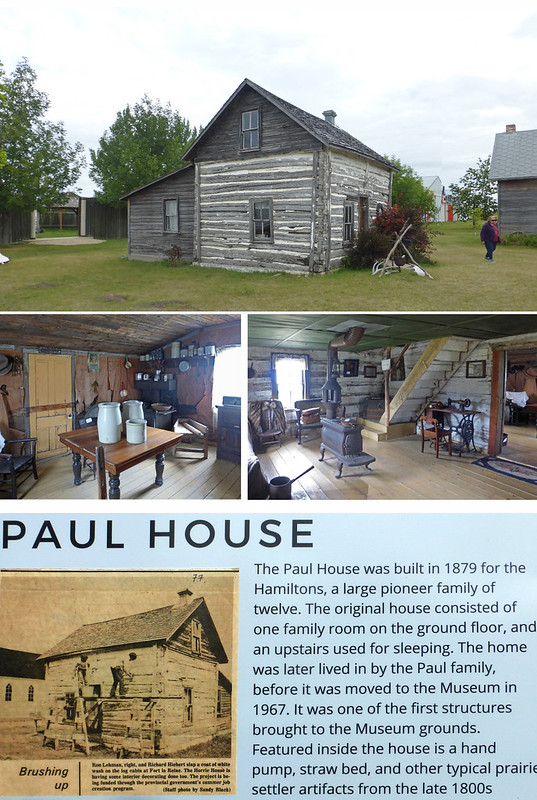
The 1922 Case house is notable since it was a "catalog" house. Just as Sears Roebuck offered catalog houses during the 1910s and 1920s, Canadian department store Eatons of Totonto had a large catalog operation selling into the vast western prairie. (The Case house is actually an Aladdin plan, not an Eatons.) That is the Case home on the far right of this photo.
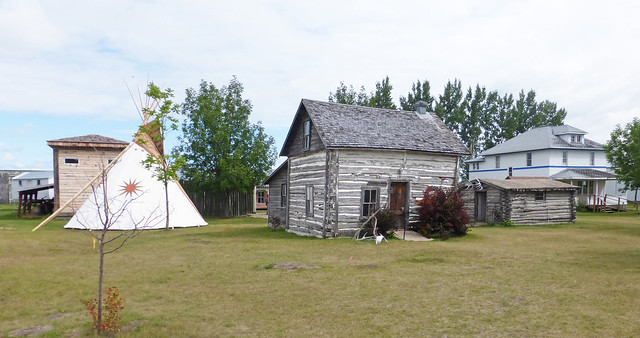
Out on the porch, I was intrigued by this gasoline powered lawn mower. Offered in the Eaton's catalog for $119 in 1955, that was the equivalent of almost $1400! No small investment. The green colored handle reminded me of a neighbor's similar mower when I was growing up in Portland, Oregon. Nat Davis lived just three houses away and had the only power mower in our area of Northeast Portland during the 1950s. His was purely green, so I altered the color on this mower for use in a future blog on homes in the Foxchase neighborhood of Portland.

An earlier house, typical of the area is the Assiniboine tipi. The museum puts it in place each spring and then takes it down in September.
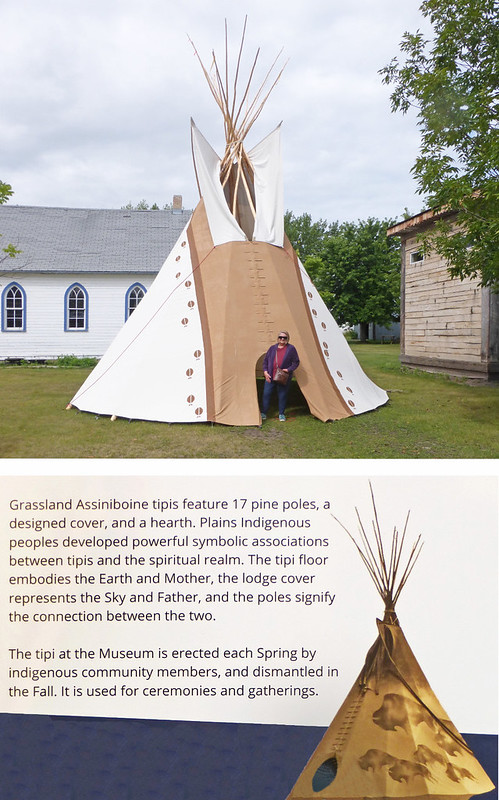
Also, nearby is this small Ukranian church from 1939.
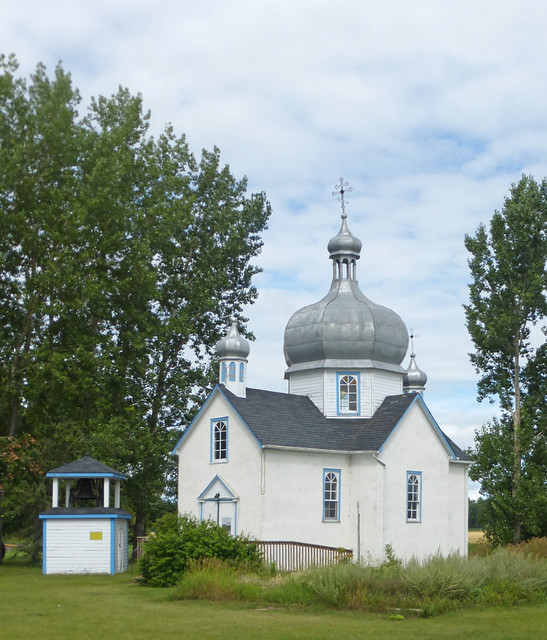
The war museum, recently moved onto the Fort la Reine property, offers a view of WWI and WWII from the Canadian perspective.
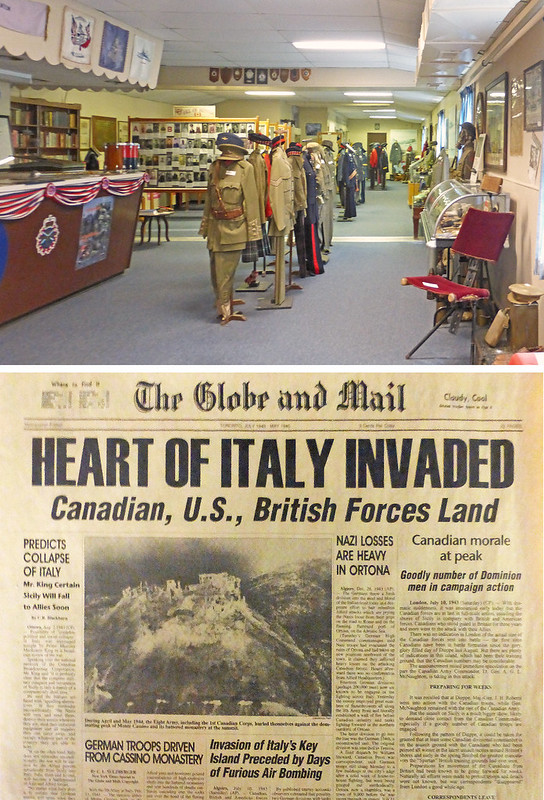
Portage La Prairie served as a training base for 5,000 airmen during World War II so there is considerable emphasis on pilot training in the exhibit.
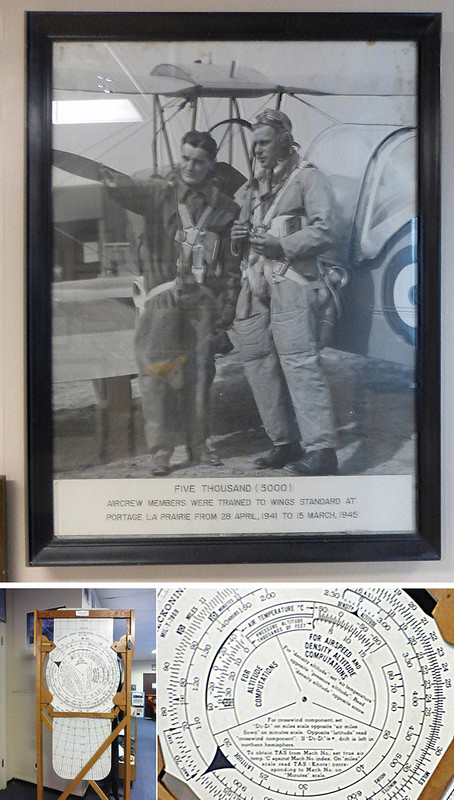
We skipped the Case agricultural exhibit which would likely be of great interest to anyone with a farm background and then returned to the highway. We had scouted out one more stop in the area, however. Portage La Prairie boasts the largest Coca-Cola can in the world and we had to stop for that.
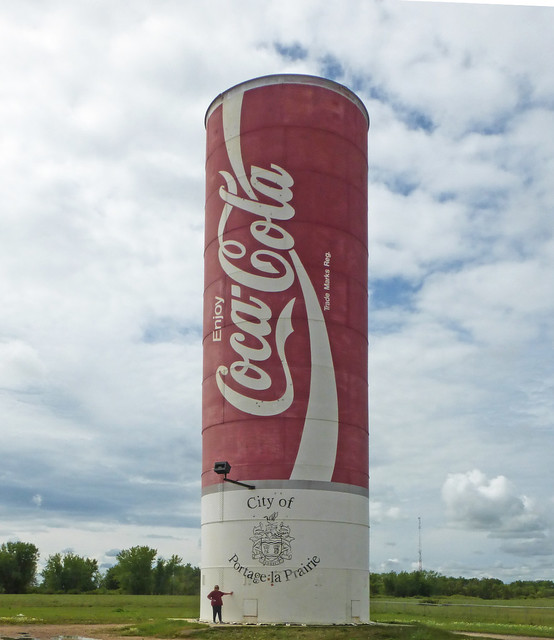
More photos on this Flickr Album.






No comments:
Post a Comment